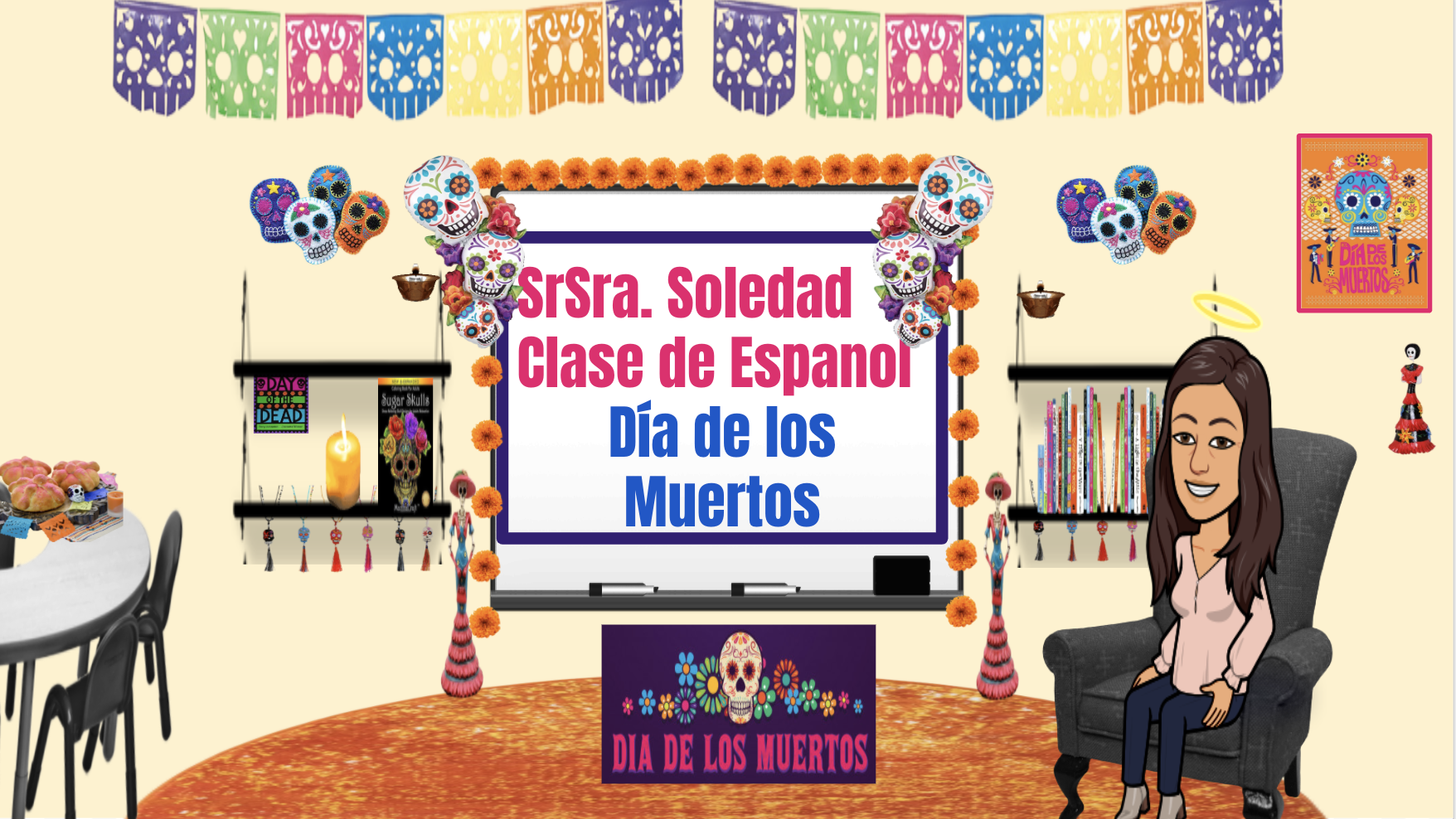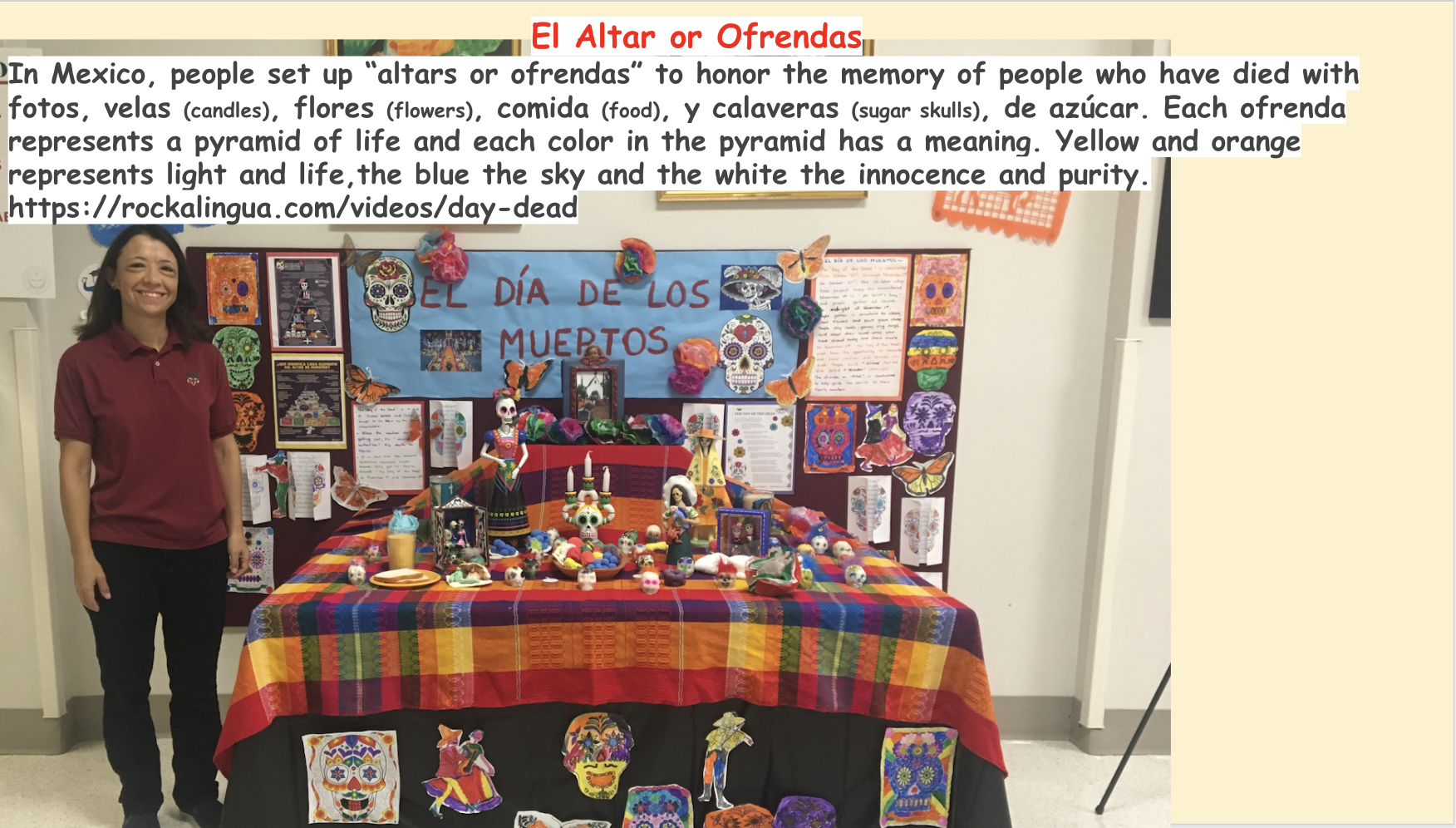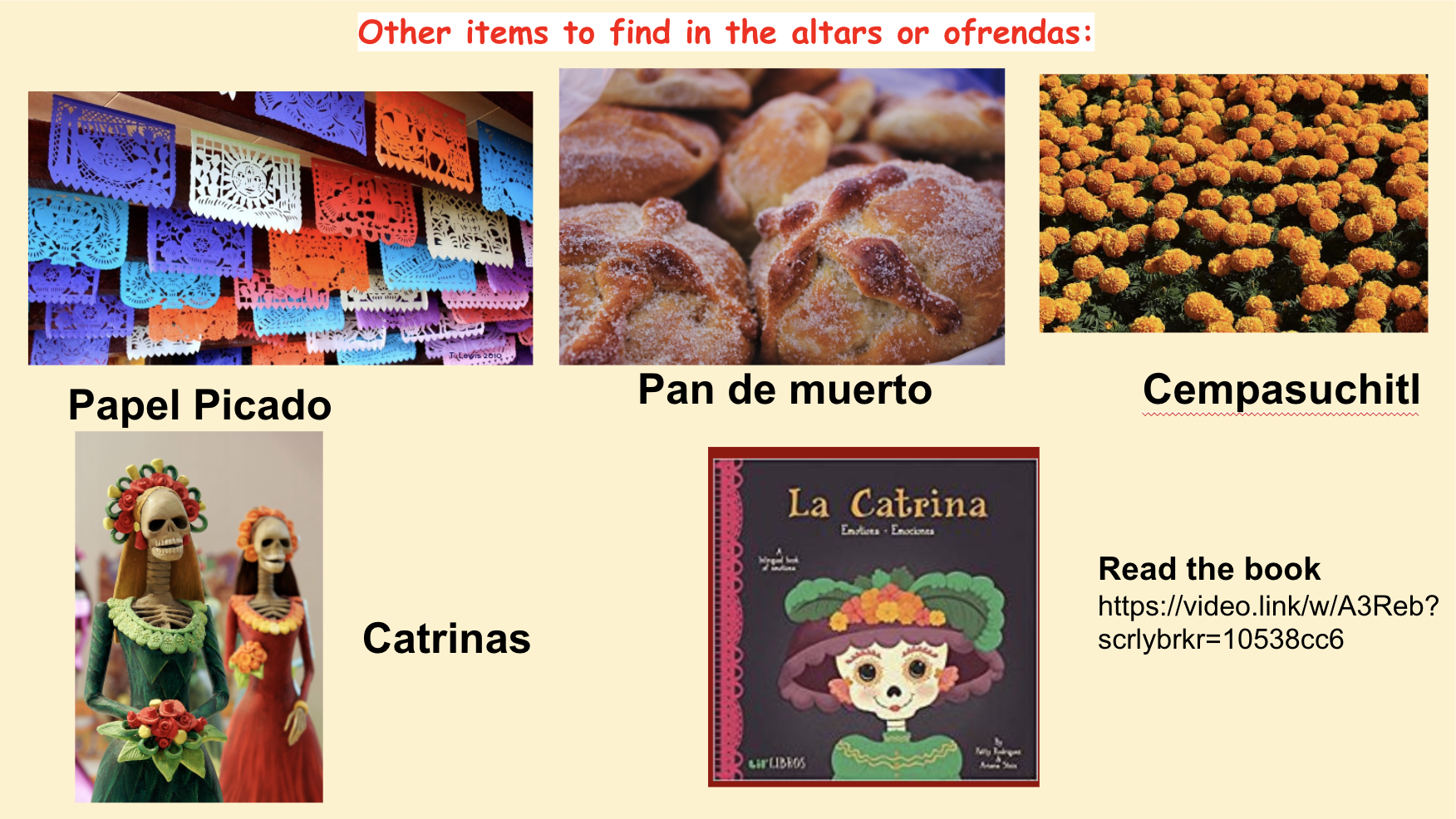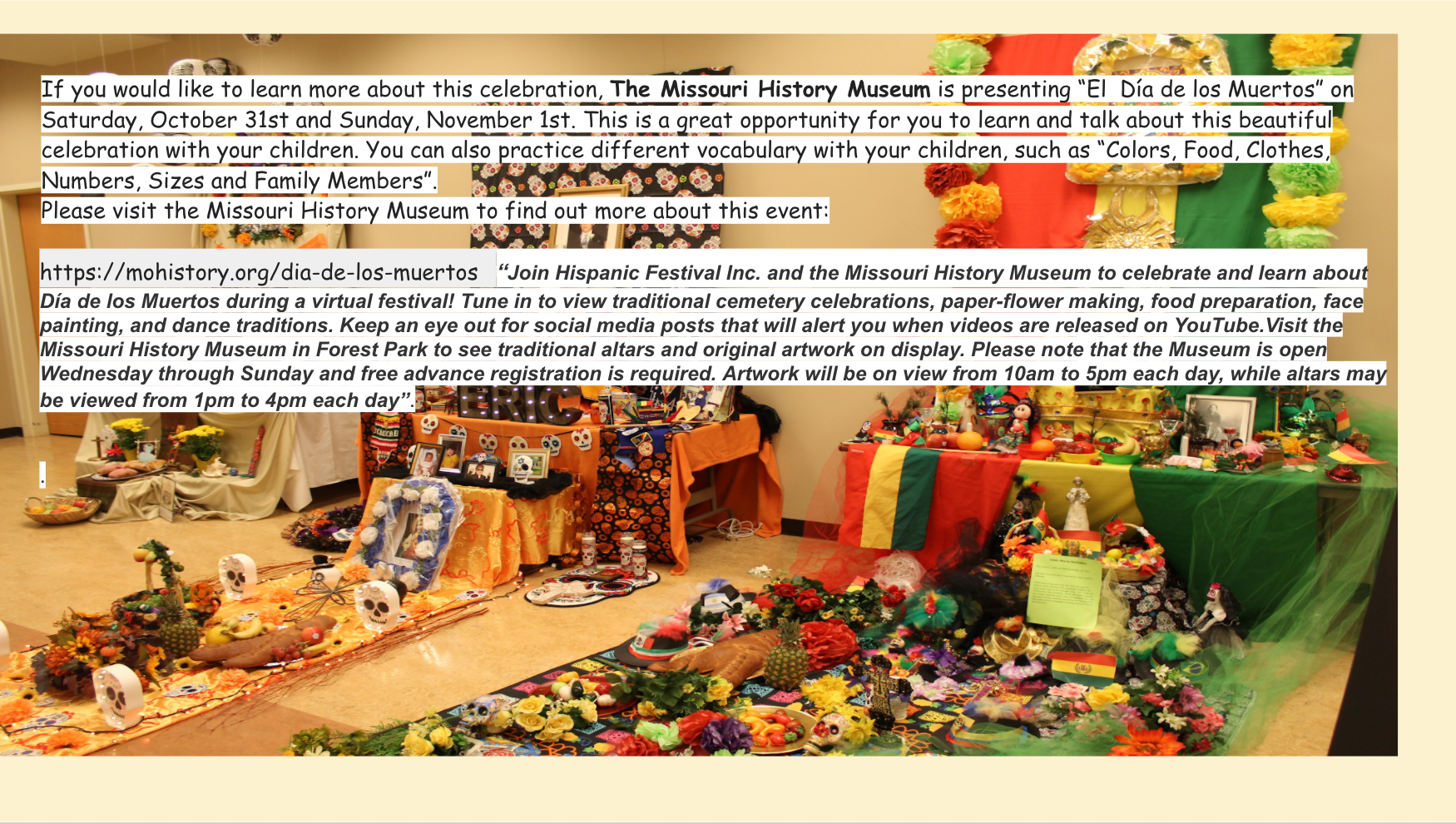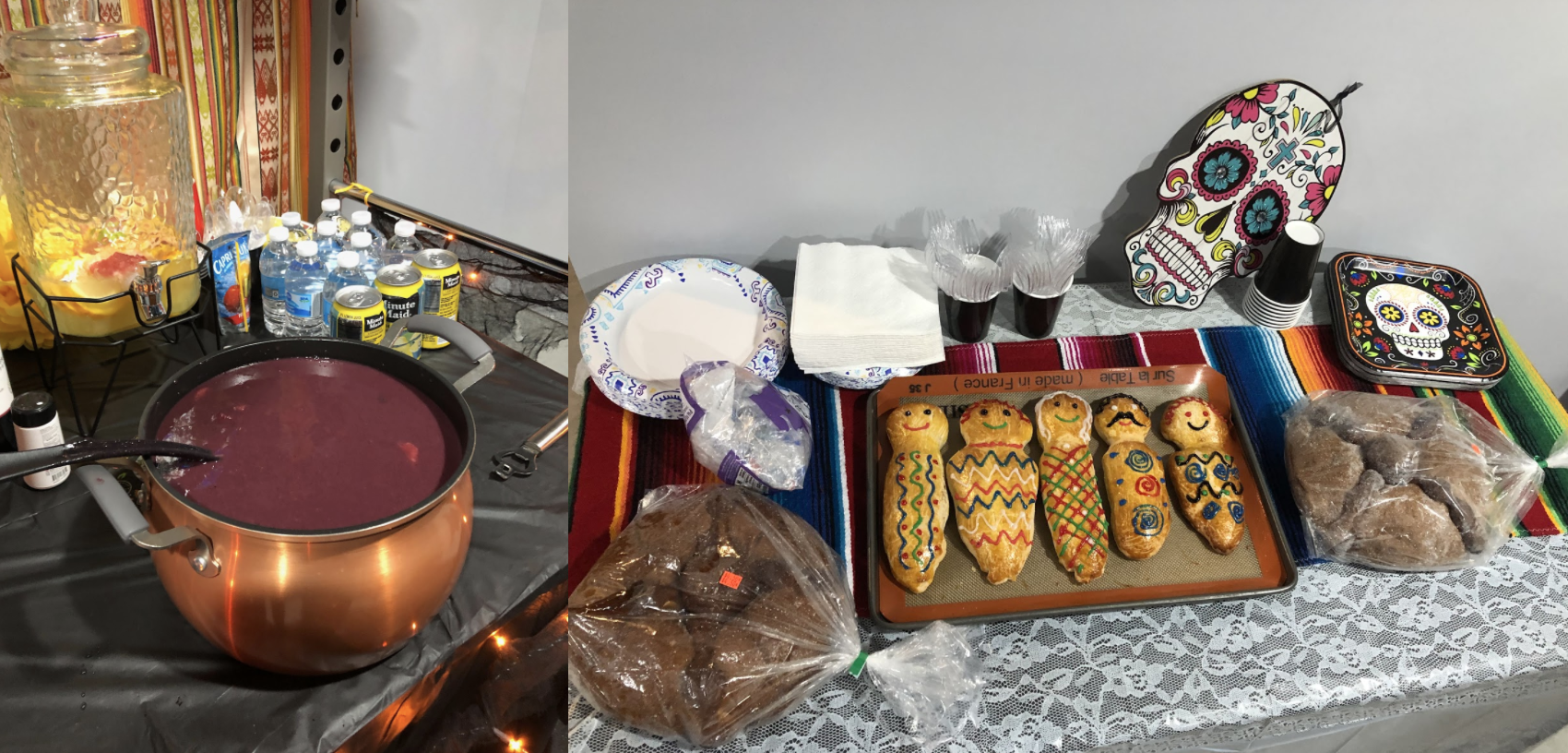The following story about Día de los Muertos is written by señora Soledad Villagomez, Lower School Spanish Teacher. She shared all about this special celebration with her Beasley Lower School students along with photos, video, and a presentation over Zoom.
Every school year, as part of the cultural exploration aspect of the Spanish curriculum, students in Beasley Lower School learn about an important celebration that takes place in every Hispanic country. This celebration is called “El Día de los Muertos» or «Día de los Difuntos” (The Day of the Dead). This celebration is my favorite one.
The Day of the Dead is celebrated on November 1 and 2. It is meant to remember loved ones who have passed away and are not present anymore in this world. The Day of the Dead is a bright and colorful celebration that includes a variety of food, music, and art. The most important aspect of this celebration is time spent with family and friends who gather together to remember and honor the people who have died.
Each Hispanic country celebrates El Día de los Muertos with unique cultural traditions, and each family celebrates it in different ways. In Ecuador, my native country, the origins of this celebration can be traced back from the Incas, the largest empire in the Pre-Columbian era that occupied large portions of Western South America. The Incas believed that death was only a passage to another life. They had ceremonial burials in which they prepared the deceased with food, water, candles, and other items. Until present times, some areas in Ecuador, especially the places with a large population of indigenous communities, follow the Incan ancestral tradition of bringing a variety of food, water, and flowers to the tombs in the cemeteries to remember the people who died.
In my family, we celebrate together by making a traditional Ecuadorian purple beverage called “Colada Morada.” The preparation consists of diluting purple cornflour with enough water and cooking it in very low heat adding different aromatic herbs and spices such as arrayán/myrtle, lemongrass, Andean Ishpingo, cinnamon, cloves, orange leaves, lemon verbena, star anise, and sweet peppers. Finally, we add a syrup made with “raspadura,” which is a kind of brown sugar, along with fruits such as guava, mortiños, naranjillas, babaco, berries, and pieces of pineapple. The colada morada is always served with a sweet bread called “Guaguas de Pan,” which has a human shape. Some believe they were created to simulate the Indian tradition of mummification. The “Guagua de Pan” is decorated with colorful icing.
My family always gets together with friends to enjoy this traditional food. We also visit the Missouri History Museum where many altars are displayed and there are activities offered for children and adults related to this celebration. This particular year, the Missouri History Museum will have a virtual event for this celebration.
I really recommend visiting the museum not only to learn more about this unique tradition but also to learn about our own community in Saint Louis.
Here is the link to the History Museum to check the event about this beautiful celebration. The event description is: “Join Hispanic Festival Inc. and the Missouri History Museum to celebrate and learn about Día de los Muertos during a virtual festival! Tune in to view traditional cemetery celebrations, paper flower-making, food preparation, face painting, and dance traditions.»
Monarch Butterfly Migration to Michoacán, México
